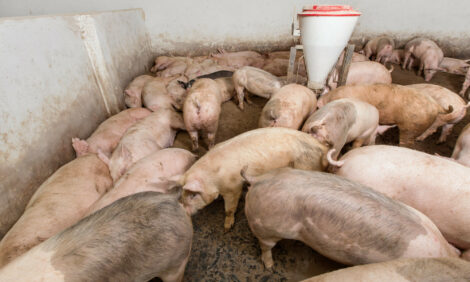



Porcine Post-Weaning Multi-Systemic Wasting Syndrome: Genetic-Environmental Interactions: Part 2
The aim of this study, reported as number 12 in the series 'Research into Action' from BPEX, was to identify the risk factors and their association with the severity of PMWS at farm level.It has been widely accepted that Porcine circovirus type-2 (PCV2) is the cause of PMWS. However, the virus does not have the ability to create the disease by itself. Before the arrival of PCV2 vaccines the virus was shown to be present on almost every pig farm in England. However, it is not yet understood why some farms are more severely affected than others and it is thought that other factors must be involved, which facilitate or help the virus to cause disease. The aim of this study was to identify the risk factors and their association with the severity of PMWS at farm level.
Severity of PMWS on Farms
Based on data collected on 147 farms, PMWS severity was measured by combining the observed post-weaning mortality, the level of PMWS morbidity in weaners and growers (up to 14 weeks) and the percentage of pigs infected with the virus on the farm (PCR in blood samples). The resulting PMWS severity score was given on a scale from 0 to 10; farms were classified as:
- Not or only slightly affected by PMWS: score <4
- Moderately affected by PMWS: score between 4 and 6.5
- Highly affected by PMWS: score >6.5
Factors Identified
When looking at potential risk factors there was evidence that both environmental and management factors influenced
the severity of PMWS. Therefore, overall good husbandry practices are advised to both reduce the severity of PMWS and
prevent the disease from developing.
The farms in this study which had low stocking densities and/or which fed age adjusted diets (more than twice between
weaning and 14 weeks), were less likely to be affected by PMWS, or to a lower extent (score < 4), than those which had
higher stocking densities and which didn’t feed age adjusted diets.
Presence of other pathogens on the farm, in this case of Mycoplasma hyopneumoniae, may also have a role in triggering
clinical signs. Controlling the transmission and introduction of other major pathogens through good biosecurity practice
are therefore essential. This was reflected in the results from the farms which had good biosecurity practices (internal and
external) as they were less affected by PMWS. In contrast, farms that required a higher number of veterinary visits due to
poorer overall herd health were more severely affected by PMWS.

| Risk factors |
|---|
| Raising grower pigs indoors
Bringing new boars onto the farm Presence of M. hyopneumoniae antibodies Presence of hospital pens which drain towards other accommodation Increased requirement for veterinary visits (consequence) |
| Protective factors |
| Asking visitors to be at least two days pig free
Changing the diets more than twice between weaning and 14 weeks of age Low stocking densities in grower pens |
Key to Controlling PMWS On-farm
- Good husbandry practices
- Maintaining good biosecurity
- Having low levels of other pathogens circulating on-farm
Producers should contact their veterinarian to discuss the options and decide if any actions are required.
 |
 |
Further ReadingYou can view the previous part of this BPEX work by clicking here. |
Further ReadingFind out more information on PMWS by clicking here. |
August 2012








